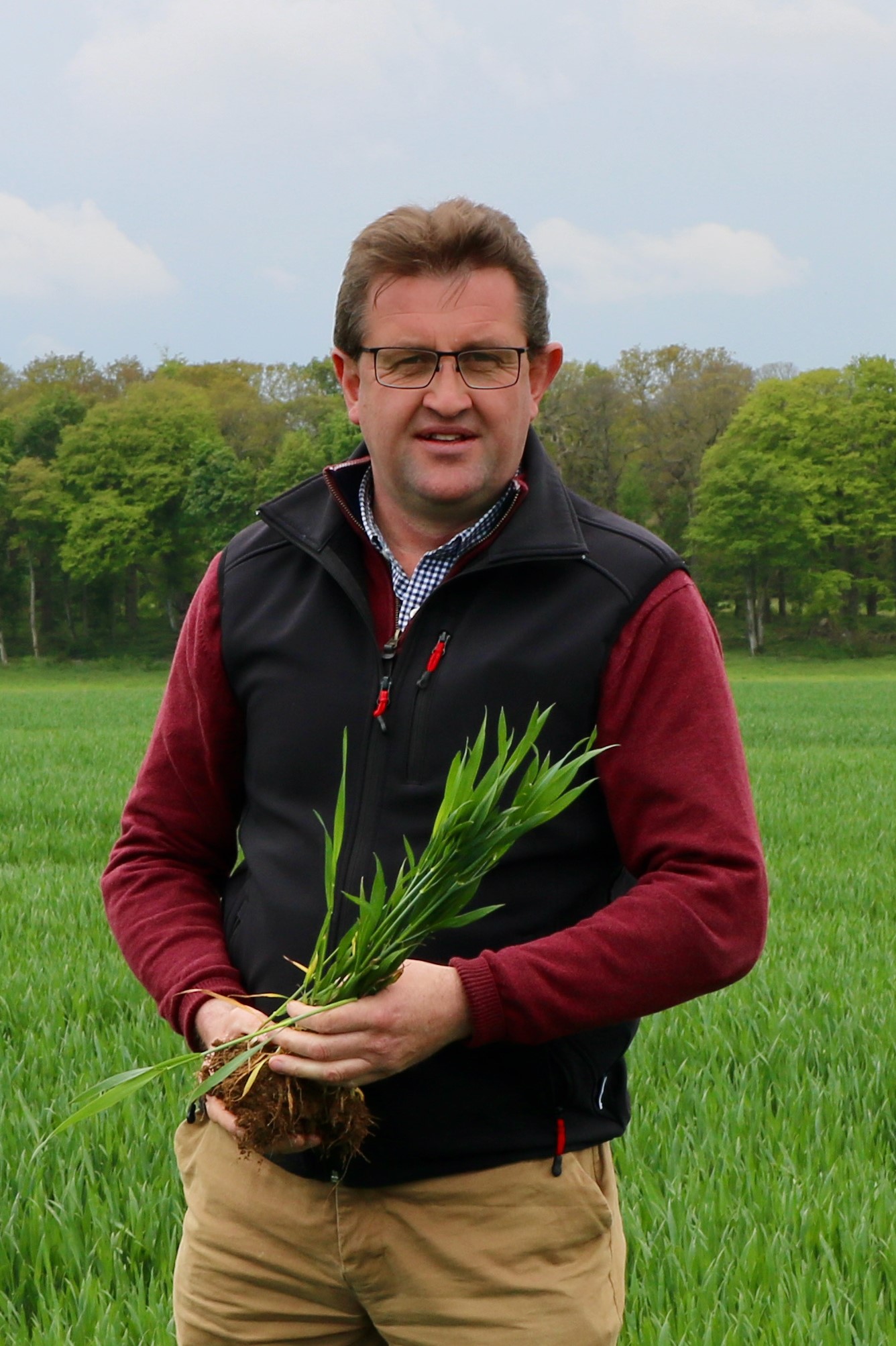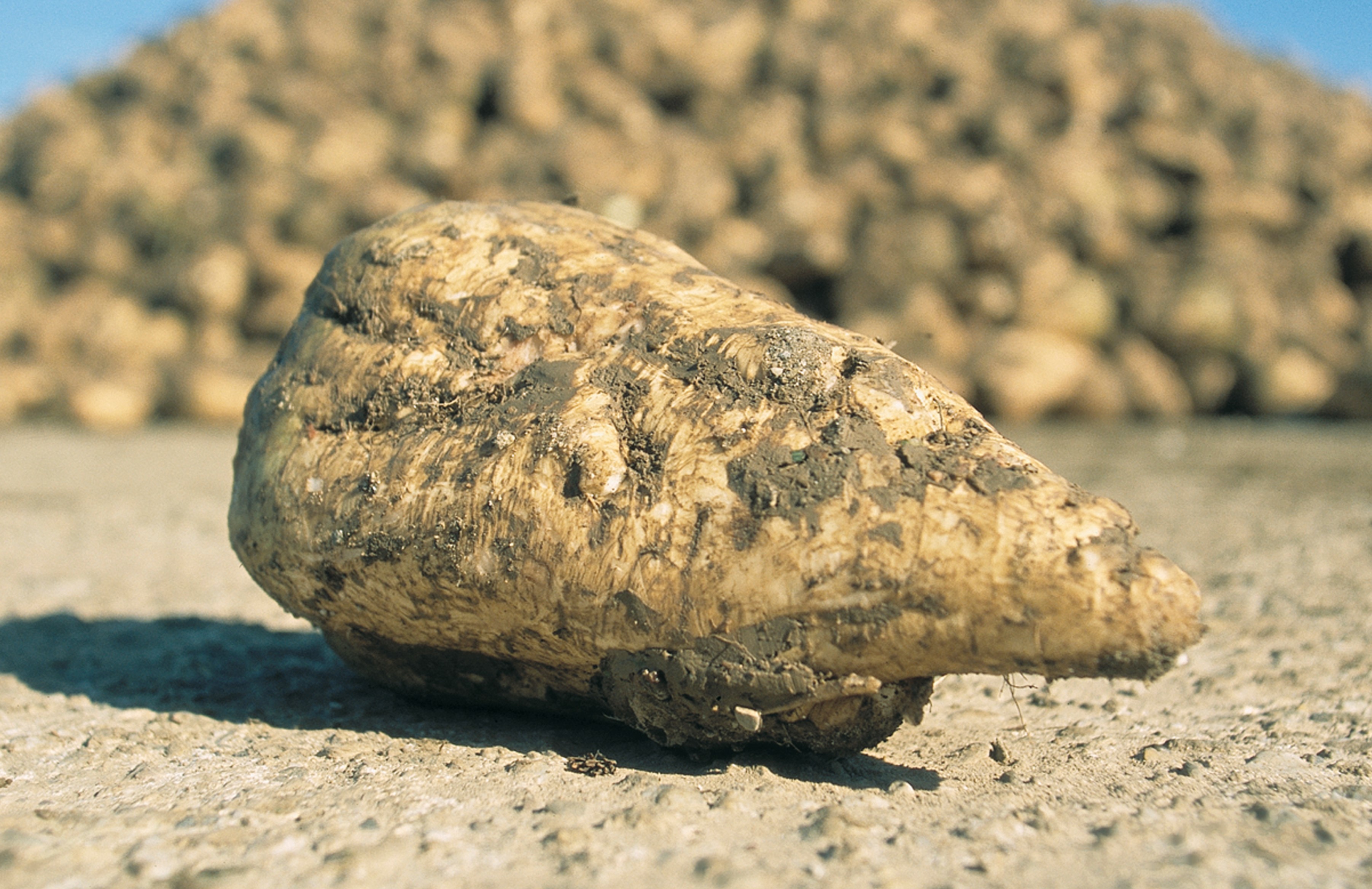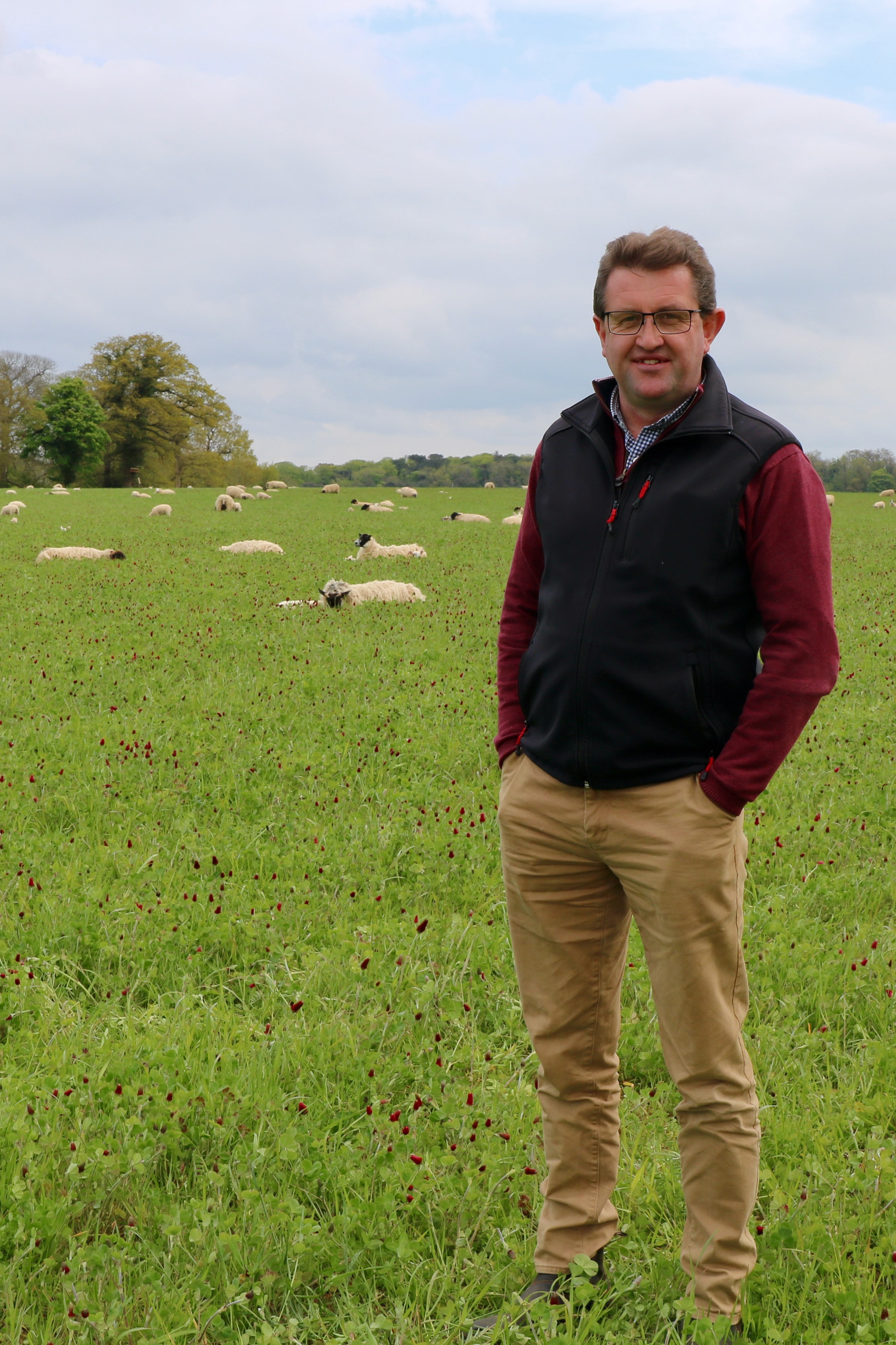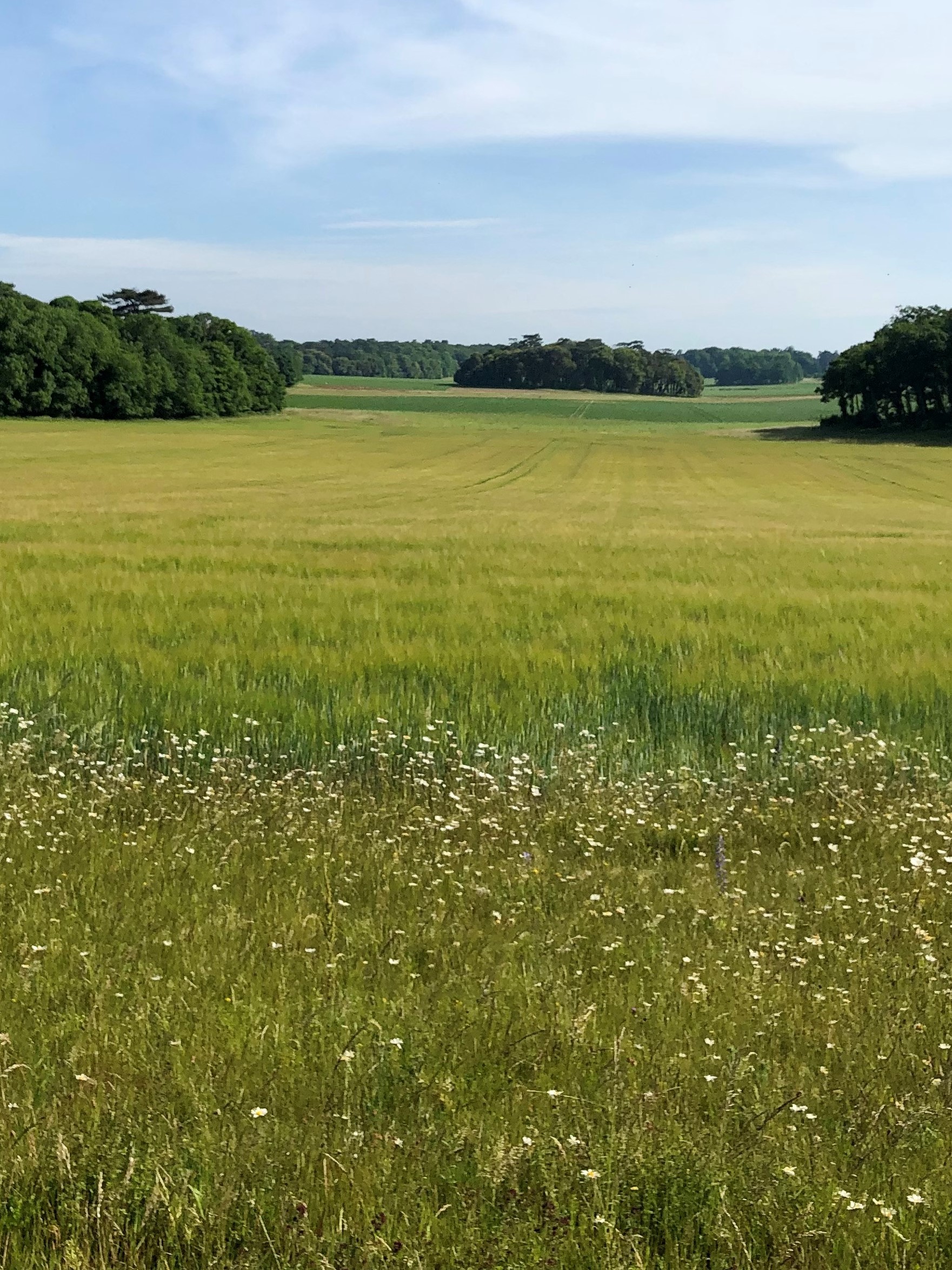A 10,000ha farming estate in Norfolk with a history to match its size is wrestling with how to grow root crops in a more sustainable system. CPM joins a BASE farm walk in June to find out more.
As long as we’re improving soil health over the rotation, we can lose the detail of what happens in between.
By Mike Abram
Can you be a regenerative farmer with potatoes and sugar beet in the rotation? That’s the question posed by James Beamish, farm manager for the Holkham estate on the North Norfolk coast at the start of a farm walk for BASE-UK members.
We’re standing under the Holkham Monument – a tribute to Coke of Norfolk, whose descendants own the 10,000ha estate. In the distance is the 18th Century Palladian style Holkham Hall, built by Coke of Norfolk – the 1st Earl of Leicester – and home to the current 8th Earl of Leicester Thomas Coke.
Running on the parklands in between are 450 head of deer which roam the park, along with hundreds of people visiting the Hall and the park grounds. Opposite the park is the beach, one of five habitats making up a 1600ha nature reserve on the estate, alongside sand dunes, pinewoods, salt marsh and freshwater grazing marsh.
Coke’s Monument is a fitting place to start the tour, says James. “Coke of Norfolk was well-renowned for being instrumental in the agricultural revolution, although when you look back in history, he came in on the coattails of some who came before him, like Jethro Tull, Robert Bakewell and Turnip Townsend – the creator of the Norfolk four-course rotation.

Coke of Norfolk was very instrumental in improved breeding of livestock, improved crop production and inviting agriculturalists from all over the world to discuss good agricultural practice.
“But Coke developed long-term farming systems. He was very instrumental in improved breeding of livestock, improved crop production and inviting agriculturalists from all over the world to discuss good agricultural practice – knowledge exchange started 250 years ago.
“And he was the first landlord in the country to grant long-term, 21-year tenancies on the premise they looked after the land. That’s something very much in our thinking today.”
Farming at Holkham has undergone a transformation in the past decade under the watchful eye of director of farming Poul Hovesen and James’ leadership.
Approximately 75-80% of the estate’s area is farmed as 22 businesses. Nine of those, each owned by a member of the Coke family, is managed in-hand by James’ team covering 3,500ha. The other 13 are tenancies.
“Ten years ago Holkham was on the treadmill of short-term farming,” says James. “There was no real rotation – there was sometimes four root crops in seven years as that was where the cash came from.
“As a farming industry we’ve relied on plastic cans and bags, and short-term farming systems for too long. We have resistant grassweeds and insects, soil erosion and poor-quality soil, albeit delivering what we have been asked to do – very cheap food. But it has been to the detriment of the environment and soils,” he adds.

Lord Leicester has challenged the team to farm without ‘cides’ by 2030, says James Beamish.
Lord Leicester recognised that went against the ethos of the estate’s reputation for long-term thinking and employed Poul to advise on the farm and subsequently James as farm manager.
The first thing to change was the rotation. “It’s currently a six-year rotation, potatoes into winter barley, then oilseed rape, wheat, sugar beet, spring barley and back to potatoes.”
Cultivations and cultivation depth has been reduced, but except for spring beans and crops following beans or peas, nothing is direct drilled. “I would love to know how to make direct drilling work on 85-90% sand,” says James.
So how does that and the root crop production tie in with the estate being on a regenerative journey? “We’re fully aware that potatoes and sugar beet are not good for our soil structure, with the need for intense cultivations.”
But the shallow, calcareous soils with high sand content and a little bit of silt are perfect for producing salad potatoes with bright skin finish, which can also be stored long-term, he points out. “If we can’t fit them into farming systems, where are they going to come from? Someone will grow them if there’s a market.”
The aim at Holkham, therefore, is to mitigate the impact of the root crops over the length of the rotation. “As long as we’re improving soil health over the rotation, we can lose the detail of what happens in between. It might be two steps forward and one back, and then two forward again, but as long as over the rotation we’re improving what we’re doing, then we’re comfortable,” he says.
In potatoes, several mitigation tactics are employed across the 400ha grown in a 50:50 trading partnership with Lincolnshire-based Emerald Produce. Cover crops are grown before each crop, helping to improve soil structure making it more friable, and reducing bed tillering.
“We’ve come a long way in reducing cultivations and don’t plant the three-row, 1.8m wide beds as deep as we used to.”
Growing 80% salad varieties planted in April to the end of May means harvesting begins in July through to the first week of September, when conditions are better to lift potatoes. Holkham has invested in three harvesters – slightly over capacity – rather than using contractors, which allows lifting in optimal conditions.
A similar lifting philosophy is employed with sugar beet, sharing a machine with two other farms, increasing cost but giving the flexibility to lift when conditions are good. A dedicated haulier follows the harvesters around to fulfil the 120 loads a week into the factory.
The benefit of lifting in good conditions is that soil remediation can also be carried out in better conditions, he says. “There’s no way round it. Once the potatoes come out a deep leg through is the quickest reset button to get back in good conditions. We can try with roots all we want but it will be long term.
“Everything that’s lifted in a day is deep cultivated by that night. If you lift and then get a lot of rain, you’re into problems,” says James.
After the 23,000t across 330ha of sugar beet has been lifted, the approach is dependent on conditions. The ground will either be left for the 90,000 pink-foot geese that call the estate home to feed on, or a shallow cultivation is used straight after the harvester before a deeper cultivation if lifting is in good conditions. If necessary, the plough can also be used where the farm has been forced to lift in iffy conditions.

Roots crops in the rotation provide a challenge in a regenerative system but at Holkham the aim is to minimise any soil damage and counter it elsewhere in the rotation.
Before sugar beet, a cover crop is also grown. The cultivation ahead of the cover forms the cultivation for the beet crop, so is deeper than necessary for the cover alone, explains James. In the spring a Kӧckerling Allrounder spring tine works the top 50-60mm to create the seedbed for beet, incorporating the cover crop and removing any surface compaction if the crop has been grazed by sheep.
The farm has experimented with strip-till using either a Kuhn Striger or Horizon SPX, but a comparison between strip-till and conventional systems is highlighting lower vigour in strip-tilled beet. A similar result has been seen in maize, which is grown for an AD plant where potatoes or beet don’t suit the land.
He’s looking for it to be a one-pass system for beet in the spring, but the strip was more cloddy than ideal and with secondary cultivations just in the strip not possible, it has some restrictions. “This season we could only get the strip-till machine four to five days ahead of drilling, so potentially lost moisture. Moisture conservation ahead of spring crops and the management of cultivations ahead of both sugar beet and spring barley is getting ever more important.”
Beet fields drilled immediately behind cultivation have populations of 115,000 plants/ha, while those drilled 48-72 hours after are down at 80-90,000 plants/ha, he points out.
Sugar beet is grown with no insecticides, as are other crops on the estate. Lord Leicester challenged the team to farm without ‘cides’ by 2030, says James. “It’s a hand-grenade thrown into the system to really make us think about every decision we take. He has relented a little, herbicides will be a challenge, but we have been insecticide-free for two years.”
After finding a leaf with virus yellows in mid-June, James is resigned to the field having a mottled effect later this season but hopes the beneficial insects he’s encouraging on the edge of the field will help.
“Our challenge is persuading British Sugar, and its customers like Nestle, to pay a little more for our sugar because we’re taking all the risk being completely insecticide-free,” he says.
“The door hasn’t been shut on that for the first time. I would love our food to have something like the energy rating on washing machines. If we could have a biodiversity or CO2 rating, or combination of the two on food, that would give people who can afford it the choice and help us in future,” he concludes.
Livestock integration learning curve
Elsewhere in the rotation shallower cultivations are used, with the predominant system a Väderstad Opus, while a Kӧckerling Allrounder has been trialled and ordered. A Väderstad Carrier is also available along with the plough. “I use a spade more than anything else and decide what and how deep we need to go,” he says.
The winter OSR area has been decreasing across the farm, being replaced by either spring beans on better soils, or one- or two-year grass clover leys, which has led to an increase in the sheep flock from 70 to 650 ewes.
Species choice for the ley is a learning curve. While the sheep love chicory, it has been a problem in following arable crops, comments James.
“Sainfoin is the same and has damaged the yield in the following spring barley. Our average spring barley yield was 5.9 t/ha last year but a field which had a sainfoin/vetch understory, despite a good dose of glyphosate plus 2,4-D pre-crop, yielded 2.8 t/ha.”
He’s also finding lambs have better growth rates on permanent pasture than on the grass leys, while cover crops with clovers and vetch added to fodder radishes are better than radish alone.
The cover crop species mix varies by establishment date and aim – around 950ha of covers are grown ahead of all spring crops, established using a biodrill on the Väderstad Opus.
After gradually increasing the number of species over the years to six or seven, he feels that’s gone too far and is simplifying for this autumn to predominantly phacelia, radish and vetch, with the proportion of radish decreasing for earlier established crops.

Species choice for the ley is a learning curve –– for instance, while the sheep love chicory, it’s been a problem in following arable crops, comments James Beamish.
“We’re using covers for nutrient cycling. The radish with its deeper root will help with water infiltration, while the phacelia and vetch with more fibrous roots at the top help with surface soil structure.”
He has also used sheep to graze the cover crops as a management tool but is not 100% convinced they are the golden hoof in this situation. Three years of strip trials comparing sugar beet after cover crop, grazed and non-grazed, and no cover crop has shown the beet after non-grazed covers to be much darker green in early July than grazed covers, with no cover even lighter green, he says.
“Even though the sheep recycle the nutrients back in, they are putting on weight, so a certain amount of that nutrition is walking off the field,” he suggests.
Other organic amendments are added to also build organic matter – 3000t of farmyard manure from cattle and 2000t of solid digestate from the AD plant, he adds. “We do everything we can in the rotation as a shot in the arm for building organic matters.”
Benchmarking organic matter tests carried out this year found the arable soils ranged from 0.9-2.5% typically, with some just up to 3%. The 100-year-old permanent pasture was 3.2-3.4%, salt marsh at 6.8%, and surprisingly 200-year-old ancient woodland was only 3.2%.
“We’re going to be struggling selling carbon at Holkham,” he says.
Champagne malting barley

A very similar soil type to that of the Champagne region in France has led Holkham to call itself the Champagne region of malting barley
A very similar soil type to that of the Champagne region in France has led Holkham to call itself the Champagne region of malting barley. “Malting barley tends to perform on it year after year,” says James.
Cooler weather because of the estate’s proximity to the coast and sea mists also help keep quality high for the farm, which has a long-term relationship with Adnams Brewery, producing about 70% of their green barley needs.
“We guarantee Adnams 2500t of pure 1.65% grain nitrogen crop and manipulate the crop year on year to deliver that.”
Adnams head brewer and director of brewing visit the crop each year, which helps them understand the challenges of delivering that quality each year, adds James.
In 2020, when dry weather pushed grain N to 1.75-1.8%, being forewarned of potential problems and then quick discussions once combines started rolling allowed Adnams’ brewing processes to be adjusted to cope with higher N barley, albeit with a price adjustment, he explains.
“It’s a fantastic example of working with the supply chain, something that’s not easy to do with commodities.”
This article was taken from the latest issue of CPM. For more articles like this, subscribe here.




